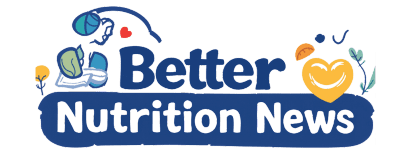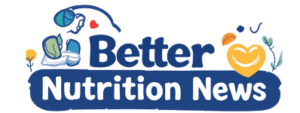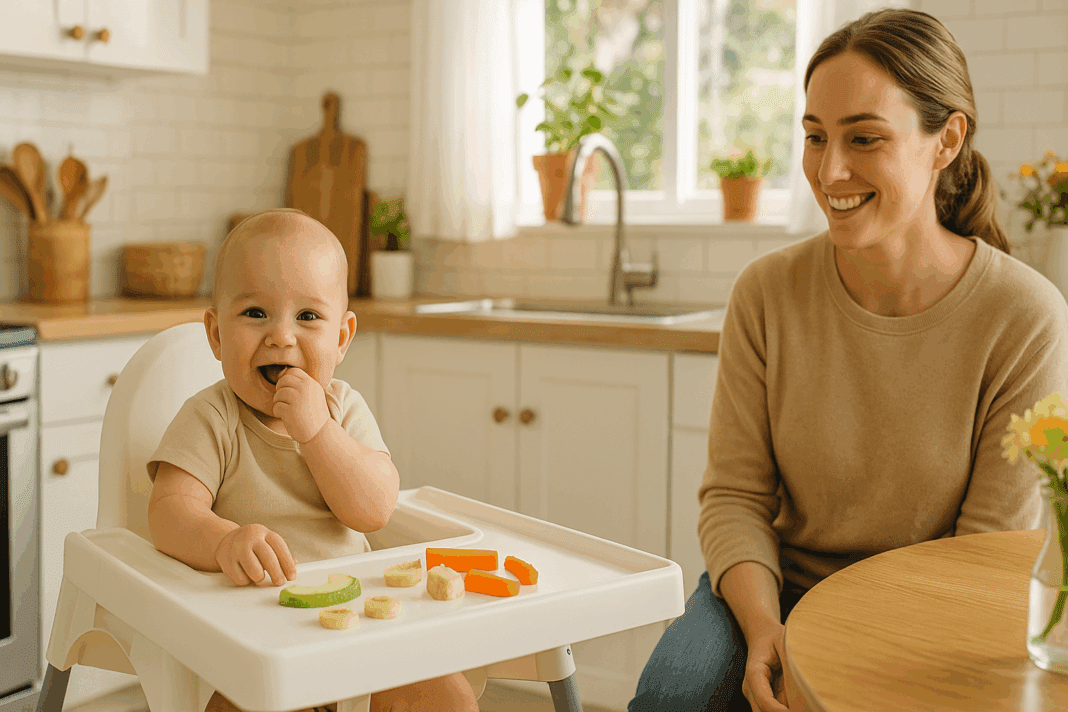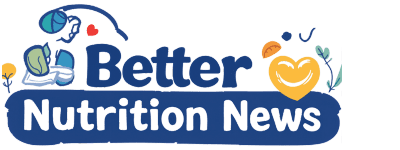Introducing solid foods to an infant is one of the most meaningful transitions in early childhood, and selecting the right resources to support this process is crucial. For many modern parents, the concept of baby-led weaning (BLW) has emerged as an appealing and empowering alternative to traditional spoon-feeding. A high-quality baby led weaning book can provide parents with the insights, confidence, and science-backed strategies needed to make this transition safe, nourishing, and developmentally appropriate. In this comprehensive guide, we explore how to choose the best baby-led weaning resources, with an emphasis on evidence-based recommendations that support optimal nutrition during key infant milestones.
You may also like: Essential Milestones in Baby Led Weaning: A Proven Guide to Nurturing Healthy Eating Habits
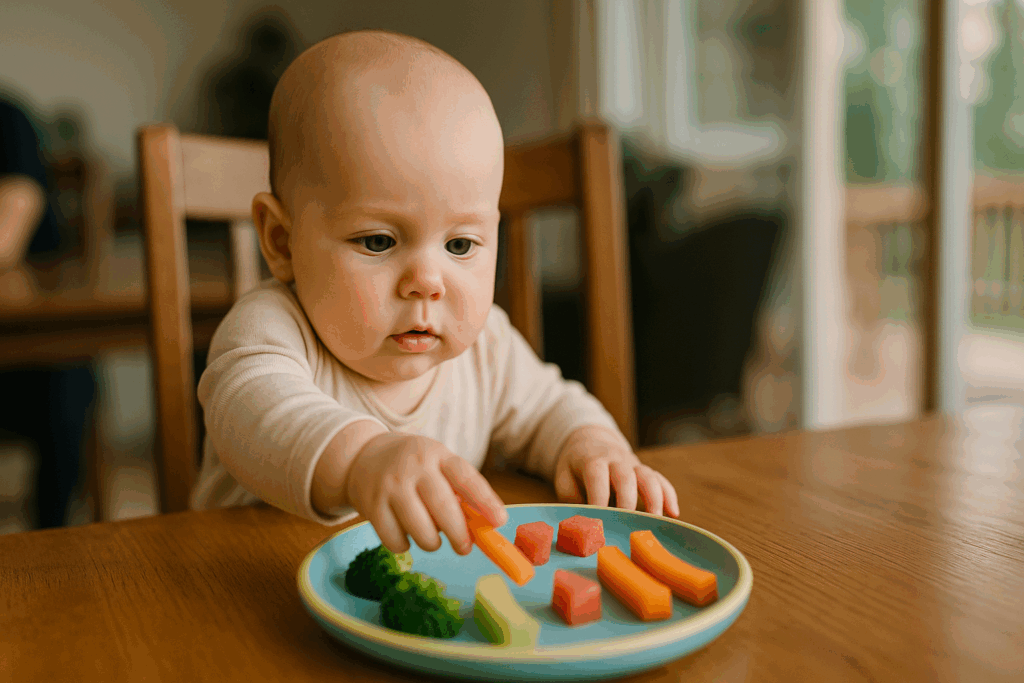
Understanding the Philosophy Behind Baby-Led Weaning
Baby-led weaning is grounded in a developmental approach that respects the infant’s natural cues and self-regulation. Rather than being spoon-fed purees by an adult, the baby self-feeds soft, appropriately sized pieces of whole food from the start of solid food introduction, typically around six months of age. This process encourages autonomy, coordination, and early sensory exploration of diverse textures and flavors. It also promotes the development of fine motor skills, hand-eye coordination, and orofacial muscle strength.
When parents embark on this feeding journey, the need for trusted guidance becomes apparent. A well-chosen baby-led weaning book helps explain the physiological readiness signs that indicate a baby is developmentally prepared to begin solids. These include the ability to sit upright unassisted, loss of the tongue-thrust reflex, and an evident interest in food. The philosophy further supports responsive feeding practices, which align with the principles of intuitive eating and promote healthy food relationships later in life.

The Role of Baby Led Weaning Books in Infant Nutrition Education
Choosing a baby led weaning book isn’t merely about finding recipes or feeding schedules; it’s about accessing a framework that integrates current nutritional science with child development principles. A well-structured BLW book will delve into the nutritional requirements of infants, such as iron, zinc, and fat-soluble vitamins, which become increasingly essential around the six-month mark. These books often include detailed breakdowns of nutrient-dense food options, tips for meal planning, and portion guidance that align with pediatric recommendations.
An effective baby-led weaning book also helps caregivers understand the common concerns and misconceptions associated with BLW, including choking risks, food allergies, and adequate caloric intake. It will provide actionable safety advice on food preparation, such as how to safely introduce allergens like peanut butter, how to serve high-risk foods like grapes or cherry tomatoes, and when to avoid honey and cow’s milk. Parents who understand these critical details are more likely to feel confident in their feeding choices and less reliant on anecdotal or conflicting information.

What to Look for in a Baby Led Weaning Book: Key Features and Qualities
The quality of information in baby-led weaning resources varies widely, so discerning readers must evaluate books for their scientific accuracy, practicality, and credibility. The first criterion to consider is authorship. Books written or co-authored by pediatricians, registered dietitians, or child development specialists tend to provide well-rounded, medically sound content. Look for credentials that indicate expertise in infant nutrition or early childhood development.
Second, examine the tone and accessibility of the book. A compelling baby led weaning book will balance evidence-based content with empathetic, nonjudgmental language. It should support parental flexibility and acknowledge that feeding journeys can vary across families. Books that offer a rigid or dogmatic approach may alienate readers or fail to account for cultural and individual dietary needs.
Third, consider the practical tools the book provides. High-value BLW books will include sample feeding schedules, age-appropriate recipes, food texture progression charts, allergy introduction timelines, and responsive feeding checklists. Visual aids, such as photos of portion sizes and food preparation techniques, are especially useful for first-time parents. These tools empower caregivers to move beyond theoretical knowledge and into confident, hands-on application.
Comparing Top Baby-Led Weaning Books: Expert Insights and Parental Reviews
With a wide array of BLW books available, parents often find it difficult to choose the right one. However, a few titles have garnered consistent praise for their depth, clarity, and user-friendliness. One of the most well-known is “Baby-Led Weaning: The Essential Guide” by Gill Rapley and Tracey Murkett, which helped pioneer the mainstream understanding of BLW. This book emphasizes trust in the baby’s abilities, provides a developmental lens for feeding readiness, and counters common fears with research-based reassurance.
Other highly rated books include “Born to Eat” by Wendy Jo Peterson and Leslie Schilling, which blends nutritional expertise with mindfulness principles, and “Simple & Safe Baby-Led Weaning” by Malina Malkani, which offers a safety-first, pediatric dietitian-approved approach. Each of these works presents the core principles of BLW while providing unique perspectives tailored to different parenting styles.
In evaluating user feedback, readers often praise books that blend scientific integrity with real-world empathy. Parents appreciate practical examples, realistic expectations, and inclusive guidance for special considerations, such as feeding twins or accommodating vegetarian households. Therefore, the best baby led weaning book is not necessarily the one with the flashiest design but the one that resonates with the reader’s needs and values while upholding nutritional accuracy.
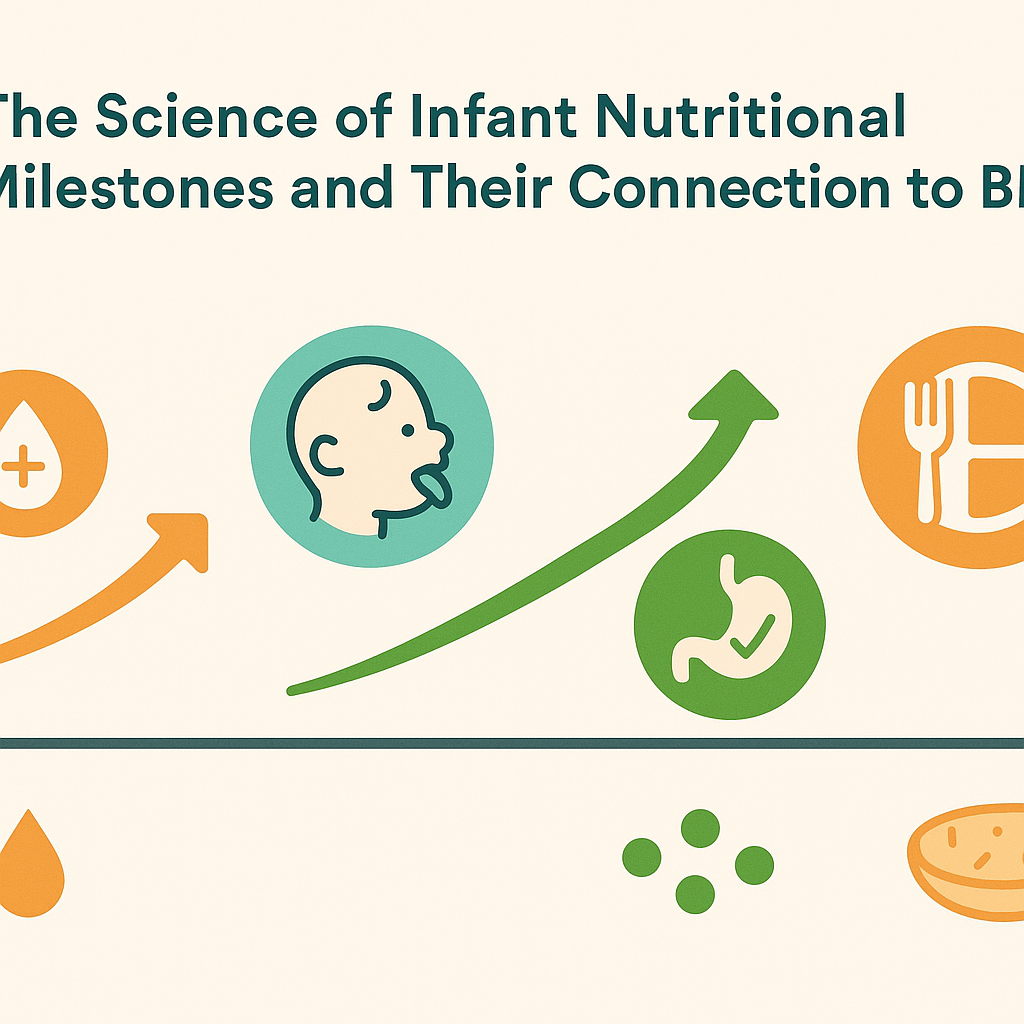
The Science of Infant Nutritional Milestones and Their Connection to BLW
Understanding the critical nutritional milestones in the first year of life enhances the value of using BLW as a complementary feeding method. Around six months, infants experience a gradual decline in the iron stores they accumulated during gestation. Iron-rich foods such as lentils, beef, fortified cereals, and leafy greens become important additions to the infant’s diet. A reliable baby-led weaning book will highlight these needs and provide strategies for combining nutrient-rich ingredients in age-appropriate forms.
Furthermore, the development of the digestive system, oral-motor skills, and sensory processing all converge to support self-feeding. This process lays the groundwork for future dietary variety and acceptance. By around eight to nine months, babies may begin to participate in family meals more actively, and BLW supports this transition by introducing shared food routines. The focus on whole, minimally processed foods fosters long-term taste preferences and can reduce picky eating behaviors.
Books that reflect an understanding of these milestones—both physiological and behavioral—help parents scaffold their child’s feeding journey with confidence. They offer realistic timelines, signs of readiness, and ways to address common setbacks like teething, illness, or temporary appetite loss. Such content demonstrates how baby-led weaning is not a rigid protocol but an adaptable philosophy that evolves with the child.
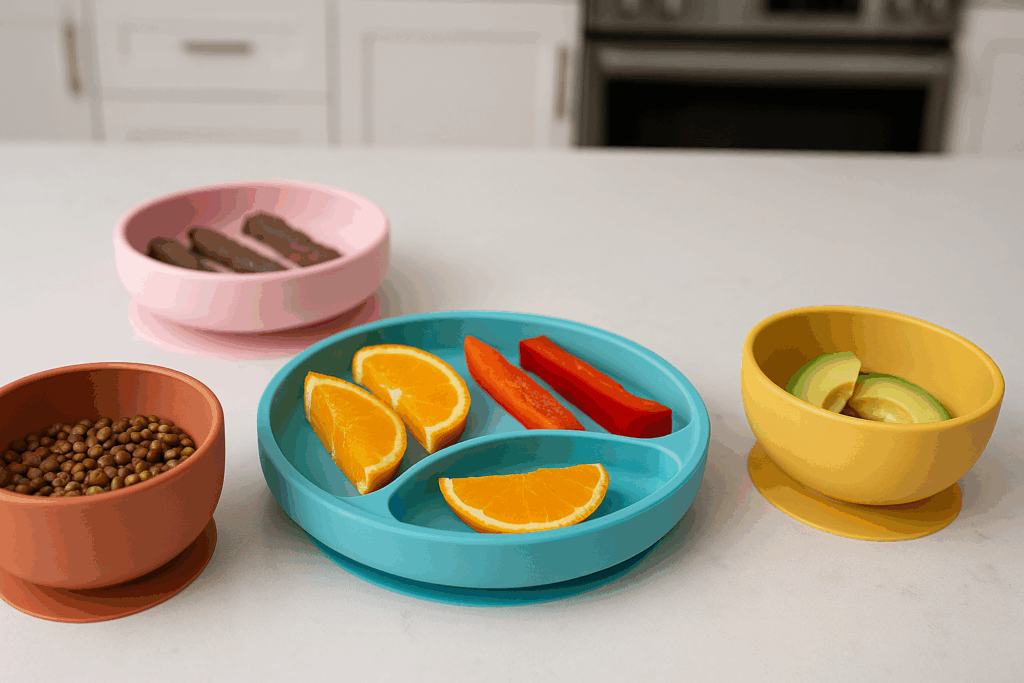
Using a Baby Led Weaning Book to Build Safe and Nutrient-Dense Meals
Meal planning with a BLW approach involves more than just slicing soft fruits and vegetables. It requires a deliberate effort to balance macronutrients and micronutrients in ways that are developmentally safe. A top-tier baby led weaning book will introduce parents to the concept of food exposure over time—understanding that repeated exposure to a variety of tastes and textures builds acceptance, even if initial reactions appear hesitant or negative.
Books that focus on building balanced meals often include practical advice such as combining iron-rich lentils with vitamin C-rich bell peppers to enhance iron absorption, or introducing healthy fats like avocado and olive oil to support brain development. They also offer strategies to avoid over-reliance on fruit or carbohydrate-heavy snacks, which may satisfy hunger but fall short of providing adequate protein or healthy fats.
Portion guidance is another key feature in well-designed BLW books. Infants have small stomachs and rapidly changing energy needs. Learning to identify satiety cues—such as turning the head away, playing with food instead of eating, or closing the mouth—supports responsive feeding and reduces the risk of overfeeding. Visual portion examples, often provided in high-quality BLW books, help parents feel more secure about the adequacy of their baby’s intake without obsessing over exact measurements.
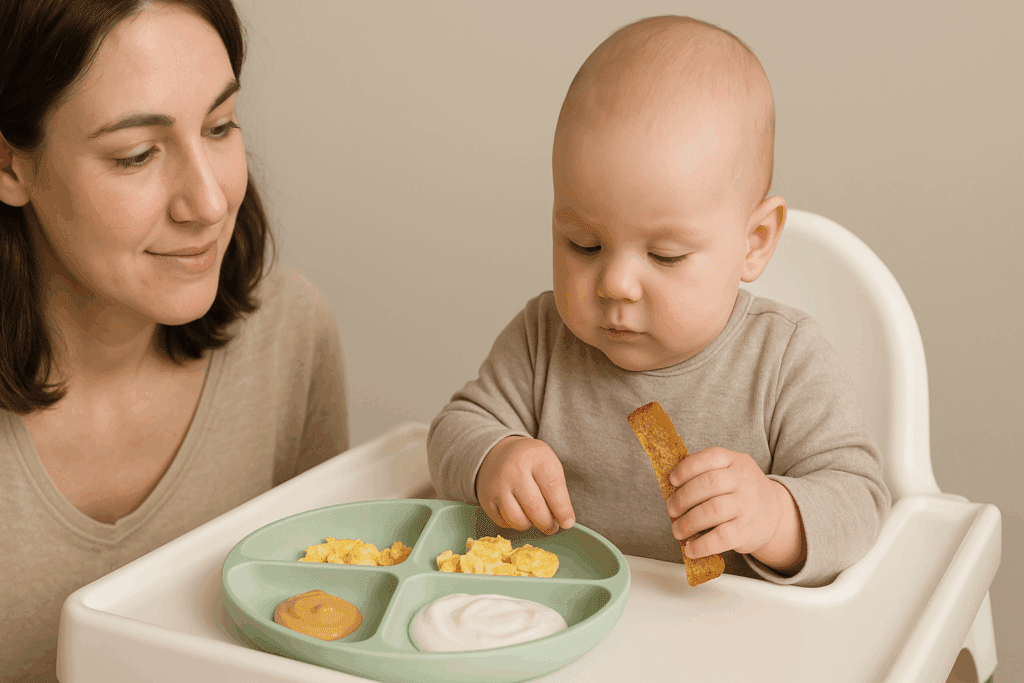
Baby-Led Weaning and Allergies: Navigating Early Allergen Introduction with Confidence
One area where a well-researched baby led weaning book proves invaluable is in navigating food allergies and sensitivities. The introduction of common allergens—including peanuts, eggs, dairy, wheat, soy, fish, and shellfish—should occur around six months according to the latest guidelines from the American Academy of Pediatrics and similar bodies globally. BLW offers an ideal framework for this process when done with informed precautions.
Books that guide parents through allergen introduction should emphasize one food at a time, waiting a few days between new allergens, and observing for symptoms such as hives, vomiting, diarrhea, or difficulty breathing. They should also discuss the difference between food allergies and food intolerances, helping parents to avoid unnecessary food restrictions. Some books provide sample schedules for allergen rotation, while others include diary templates for logging food introductions and reactions.
Another strength of comprehensive BLW books is their consideration for high-risk infants—those with eczema or a family history of food allergies. These resources should encourage parents to consult with pediatricians or allergists while also reassuring them that early introduction is both safe and beneficial in reducing allergy risk. Confidence in this area can make the difference between a hesitant parent avoiding allergens and a well-informed caregiver who safely expands their child’s dietary repertoire.
Beyond the First Year: How BLW Books Support Long-Term Healthy Eating Habits
The impact of baby-led weaning extends far beyond infancy. The self-regulation skills, sensory curiosity, and meal participation cultivated during the first year shape a child’s relationship with food well into childhood. BLW encourages children to eat in response to hunger and fullness cues rather than external pressure, which may reduce the likelihood of emotional eating or disordered eating patterns later in life.
A thoughtful baby led weaning book doesn’t stop at first foods; it includes transitions to toddler meals, family-style eating, and even guidance on managing preschooler pickiness. Books that grow with the reader’s family help instill positive food culture at home. They might cover topics like engaging children in grocery shopping, letting toddlers help prepare meals, and modeling open-mindedness during mealtime.
Furthermore, the communal nature of BLW encourages family mealtimes, where children observe and learn from their caregivers’ eating habits. These shared experiences build language development, social skills, and even emotional resilience. A long-view perspective on BLW, as presented in many of the best BLW books, aligns with public health goals of reducing childhood obesity, improving nutrition literacy, and fostering lifelong wellness.
How to Select the Right Baby Led Weaning Book for Your Family
Every family approaches feeding with its own cultural traditions, dietary preferences, and logistical considerations. Therefore, selecting the right baby-led weaning book involves aligning the book’s philosophy and tone with your family’s values. For example, some families may prioritize plant-based or allergen-free meal plans, while others may be seeking time-saving tips for busy schedules. The right book will acknowledge and support these preferences without judgment.
It is also important to consider whether the book incorporates diverse food examples and culturally inclusive recipes. Global dietary diversity helps children develop broader palates and ensures that BLW can be adapted across different traditions. Books that include multicultural perspectives or adaptable base recipes make BLW accessible to more households.
Finally, reviews and recommendations from healthcare providers, parenting forums, and early childhood educators can offer valuable insight. Look for feedback from parents in similar life circumstances and pay attention to how the book addresses common challenges like sleep disruptions, childcare routines, or reluctant eaters. A book that feels like a trusted companion rather than an instruction manual will likely serve your family well.
The Power of Evidence-Based BLW Resources in Building Parental Confidence
The feeding process can provoke anxiety, especially for first-time parents concerned about choking, weight gain, or nutritional adequacy. Having a reliable baby led weaning book to consult can offer emotional reassurance and factual clarity. When parents feel empowered by evidence-based resources, they are better equipped to make confident decisions and advocate for their child’s needs.
Many parents report that using a BLW book reduces the cognitive overload of decision-making. Instead of endlessly searching the internet or receiving contradictory advice from well-meaning friends, they can rely on a consistent, professionally curated framework. This continuity supports a calmer feeding environment, which benefits both parent and child.
Moreover, books with a focus on responsive feeding build parental intuition. Rather than stressing over exact meal quantities, parents begin to trust their baby’s cues and respect their child’s natural appetites. This shift from control to collaboration transforms mealtimes into positive experiences and helps lay the foundation for a lifelong healthy relationship with food.
Frequently Asked Questions About Baby-Led Weaning and Choosing the Right Resources
How can a baby led weaning book help manage mealtime anxiety for first-time parents?
For many new parents, the transition to solid foods can spark anxiety around choking risks, nutritional adequacy, or feeding refusal. A thoughtfully written baby led weaning book often goes beyond just the how-tos and includes reassuring context that reduces fear and builds confidence. These books frequently incorporate real-life scenarios, developmental psychology insights, and step-by-step visuals that ease the emotional weight of introducing solids. Some include personal narratives from parents and professionals, which can help readers feel seen and understood during moments of uncertainty. By normalizing common challenges and offering practical coping strategies, the right book acts as both a guide and a form of emotional support.
What if my baby doesn’t show interest in self-feeding right away?
It’s not uncommon for infants to show minimal interest in self-feeding during the first few weeks of weaning. This hesitation can be due to various factors such as teething discomfort, immature motor skills, or simply a longer adjustment period. Many blw books offer troubleshooting advice that encourages patience and experimentation without creating pressure. Strategies may include offering softer textures, varying food temperatures, or modeling the act of eating enthusiastically. It’s also important to remember that exposure—not consumption—is the initial goal of BLW, and a baby’s readiness often unfolds gradually with consistent opportunities and encouragement.
How do cultural food traditions fit into baby-led weaning practices?
One of the most empowering aspects of BLW is its adaptability to a wide variety of cultural food practices. A high-quality baby led weaning book will acknowledge that foods like lentil dal, steamed plantains, or congee can be just as nutritionally valuable and developmentally appropriate as more commonly featured Western foods. Parents are encouraged to celebrate cultural flavors and textures while ensuring safety and age-appropriate preparation. This inclusion helps babies become accustomed to the tastes and smells that are important to their family identity, fostering a sense of belonging during mealtime. Choosing blw books that embrace dietary diversity can enhance both the practical and emotional aspects of the feeding journey.
Can I use baby-led weaning if my baby attends daycare during the week?
Yes, baby-led weaning can be successfully integrated into a childcare routine with proper planning and communication. A baby led weaning book that addresses childcare settings will often suggest preparing caregiver-friendly meals, providing instruction on safe serving methods, and collaborating with caregivers to ensure consistency. Some books offer tips on writing clear BLW guidelines or meal notes for daycare providers who may be unfamiliar with the approach. Establishing trust and open dialogue with childcare professionals is essential, especially when introducing allergens or monitoring for gagging versus choking. Parents can also reserve weekends for introducing new foods while reinforcing familiar ones during the week.
What safety training should parents consider alongside using a blw book?
While most blw books contain safety guidance, many experts recommend supplementing reading with a certified infant CPR and choking response course. These hands-on classes provide the confidence and muscle memory needed to respond calmly if a choking episode occurs. Some baby led weaning books even partner with pediatric first-aid educators or include links to vetted video tutorials. Understanding the distinction between gagging (a protective reflex) and choking (an emergency) is critical, and visual demonstrations can make this clearer than text alone. Reinforcing the book’s information with practical training elevates parental preparedness and complements the evidence-based nature of the BLW method.
Are there differences between digital and print versions of blw books?
Yes, and the choice often depends on lifestyle and learning preferences. A print baby led weaning book might include durable recipe pages, high-resolution photos of food sizes, and space for handwritten notes, making it ideal for hands-on use in the kitchen. Digital versions, on the other hand, can offer embedded videos, interactive allergy tracking tools, and search functions for quick referencing during mealtime prep. Some digital formats allow updates or access to community forums, which can be helpful for ongoing support. Evaluating your need for portability, interactivity, and tangibility can help you decide which format enhances your BLW journey best.
How do blw books address the transition from infancy to toddlerhood?
Many leading blw books do not stop at the six-to-twelve-month phase but extend their guidance into the toddler years. This is a crucial transition when appetite variability, emotional development, and food preferences begin to shift significantly. Books that recognize this stage often include strategies for maintaining food variety, reducing mealtime battles, and encouraging independence through shared family meals. They may also introduce gentle approaches to picky eating and tips for incorporating children into meal planning and preparation. By offering foresight and strategies beyond infancy, these books support long-term success and reduce the need for a separate toddler-feeding guide.
What distinguishes a medically sound baby led weaning book from a trendy but less reliable one?
A medically sound baby led weaning book will cite peer-reviewed research, align with pediatric dietary guidelines, and be authored or reviewed by qualified professionals such as registered dietitians or pediatricians. These books emphasize safety, evidence-based nutrient timing, and responsive feeding over rigid ideology. In contrast, trend-driven books may prioritize aesthetics or anecdotal success stories while offering minimal depth on allergy management, feeding delays, or special needs. Reliable blw books also acknowledge developmental variability and empower readers to adapt methods to suit individual needs rather than follow a one-size-fits-all script. Always verify the credentials of the author and cross-check any health claims with established medical guidance.
How can a baby led weaning book support families with unique dietary lifestyles, like veganism or food allergies?
A growing number of blw books are now tailored or inclusive of plant-based, allergy-conscious, or specialized dietary lifestyles. These resources provide substitution lists, fortified food suggestions, and alternative protein sources suitable for young children. For example, instead of animal-based iron sources, a vegan-friendly baby led weaning book might recommend lentils with vitamin C pairings, tofu strips, or chia seed puddings. For families managing allergies, some books offer exclusion-based meal plans and rotating allergen introduction calendars, along with medical input. This level of personalization ensures that BLW remains a flexible and inclusive approach regardless of specific dietary frameworks.
Can reading multiple blw books improve my understanding or cause confusion?
Reading several blw books can broaden your perspective, expose you to varied recipes, and offer different stylistic or cultural lenses on the same feeding philosophy. However, too much variation—especially when conflicting advice is presented without context—can lead to decision fatigue or self-doubt. To prevent confusion, choose one primary baby led weaning book with strong scientific grounding and use others for recipe inspiration or alternative viewpoints. Comparing author credentials and consistency with pediatric feeding guidelines can help you vet which books complement each other. When used strategically, multiple resources can enrich your learning without overwhelming it.
Conclusion: Why Choosing the Right Baby Led Weaning Book Is a Vital Investment in Your Child’s Health Journey
Selecting the right baby led weaning book is more than a parenting decision; it is an investment in your child’s lifelong nutritional habits, autonomy, and well-being. The best books blend science with empathy, providing not just information but reassurance, flexibility, and empowerment. As infants transition from milk to solid foods, the guidance offered in these books can make the journey smoother, safer, and more joyful for the entire family.
By offering clear explanations of infant nutritional needs, practical meal planning tools, allergen introduction strategies, and long-term health insights, a high-quality BLW book serves as a trusted companion through one of early childhood’s most critical stages. Whether you are a first-time parent or adding a new member to a growing family, the support of a thoughtfully chosen baby-led weaning book can help you navigate this exciting chapter with clarity, confidence, and care.
Further Reading:
The Top 10 Baby-Led Weaning Books: Beginner’s Guides, Cookbooks, & More
